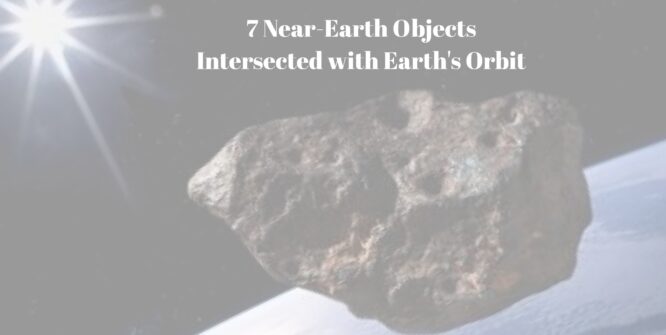After a near-miss with gigantic asteroids in February and April, Earth saw 7 near-Earth objects intersect with the Planet’s orbit over the weekend and into Monday
On Saturday, February 15th, earlier this year, an asteroid that NASA measured to be 1 kilometer wide whizzed through Earth’s orbit at 34,000 mph. However, due to our planet’s location at that time, the space rock’s closest proximity to us was 3.6 million miles. Spotted in 2002, the asteroid was thus named ‘2002 PZ39’ and had been studied extensively by NASA’s Center for Near-Earth Objects Studies. (CNEOS). Then, on April 29th, an asteroid that was 4 times bigger than ‘2002 PZ39’ went by at a slightly slower speed, getting within a similar distance- 3.9 million miles. This asteroid was discovered in 1998, named ‘1998 OR2,’ and is one of the more potentially dangerous near-earth objects (NEOs) on the US Space Agency’s radar. Although we knew it was going to miss us, and will miss us again when it sails by on April 16, 2079, the asteroid’s orbit has the potential to strike Earth in the next few thousand years or so.
Then, from Saturday June 6th to the early morning hours of Sunday, June 7th, five NEOs all flew through the Earth’s orbit while making their respective trips around the Sun. What is slightly alarming about these chunks of rocky material was that all five were discovered in 2020- so if they had the potential for a destructive impact event, the world’s scientists would not have had enough time to attempt preventing such a cataclysmic situation. Here is a chart about the asteroids:
NEO |
Time (EST) | Size | Speed | Distance from Earth |
|---|---|---|---|---|
‘2020 KO1’ | June 6, 2020- 6:00 AM | 194 ft. wide | 16,000 mph | 3.7 million miles |
‘2020 KQ1’ | June 6, 2020- 12:39 PM | 279 ft. wide | 33,000 mph | 3.2 million miles |
‘2020 LA’ | June 6, 2020- 2:16 PM | 174 ft. wide | 35,000 mph | 890,000 miles |
‘2020 KA7’ | June 7, 2020- 1:33 AM | 171 ft. wide | 16,000 mph | 2.5 million miles |
‘2020 KK3’ | June 7, 2020- 2:14 AM | 161 ft. wide | 27,000 mph | 4.2 million miles |
Of these five, the most dangerous was ‘2020 LA.’ Not because it shares a major US City’s acronym, but because it was the closest and fastest of the five. Then on Monday, there were two more astronomical objects that got close to our planet. The first of these- ‘2013 XA22’ – is the size of the Great Pyramid in Egypt, 525 feet wide, moving at 15,000 miles per hour, and like ‘1998 OR2,’ its orbit could collide with our own over the next thousands of years. It came within 1.8 million miles of the Earth at 10:40 AM on Monday, June 8th. Then, the last of this cluster of asteroids, ‘2020 KZ3,’ is the runt: small and slow, but got the closest. ‘2020 KZ3’ will come within 760,000 miles of the Earth while moving at 13,000 mph. It is 112 feet wide, and went by at 4:58 PM on June 8th.
For more information on NASA’s endeavors to track such objects flinging around in our solar system, check out this article.
Until Next Time,

**Written by Benjamin Derge, Financial Planner. The information has been obtained from sources considered reliable but we do not guarantee that the foregoing material is accurate or complete. Any opinions are those of Benjamin Derge and not necessarily those of RJFS or Raymond James. Links are being provided for information purposes only. Expressions of opinion are as of this date and are subject to change without notice. Raymond James is not affiliated with and does not endorse, authorize, or sponsor any of the listed websites or their respective sponsors.

NASAAsteroids
